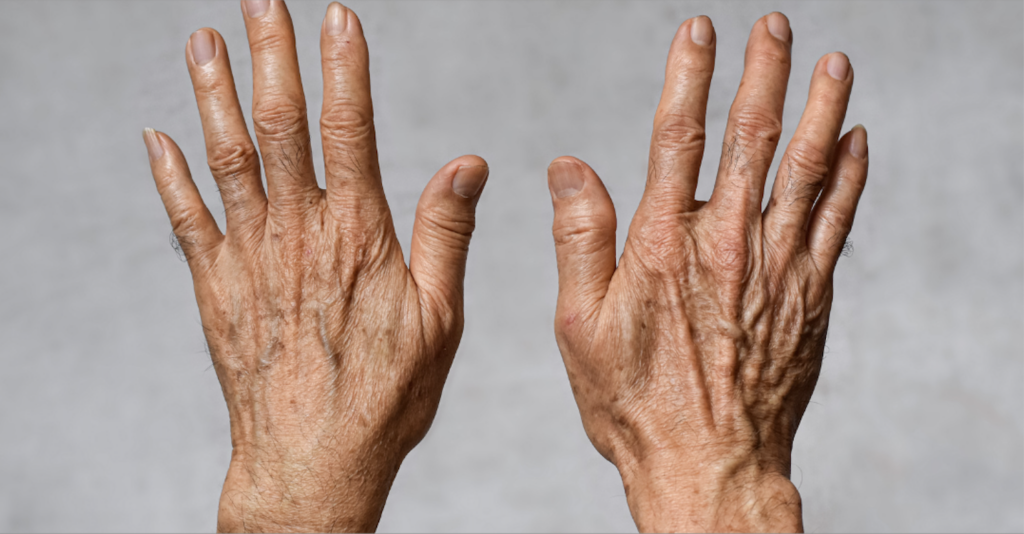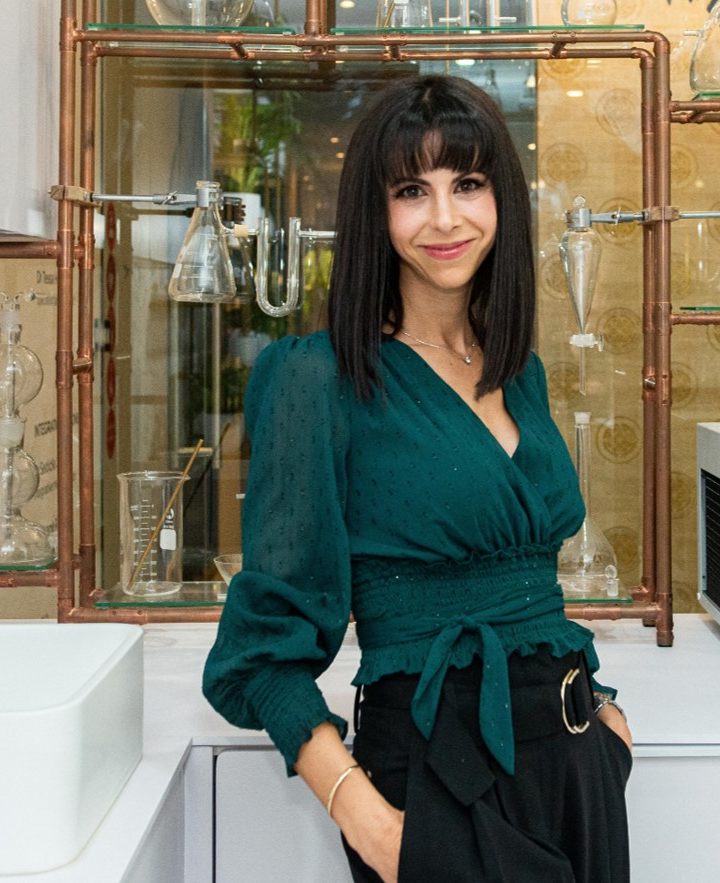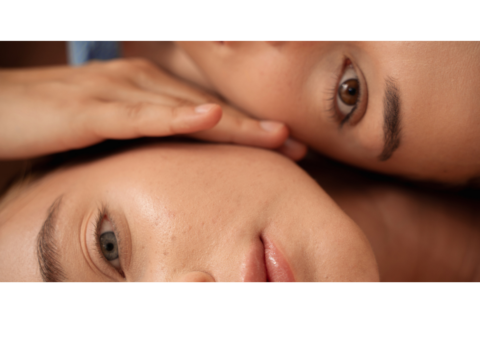
Ageing is a privilege but – as my patients keep telling me – it’s not for sissies! When it comes to the skin, plenty of weird and wonderful spots keep popping up to say ‘hi’ – from the more serious skin cancers to easy bruising, senile warts or ‘barnacles’, and little blood vessel growths called cherry angiomas.
And then there are the liver spots. These are those large brown spots that pop up over areas of your body that have seen a lot of sun: most commonly over the hands, face, decolletage, and upper back. They can be a pale tan colour or very, very dark and can range in size from a few millimeters to several centimeters.
Why do we get them?

Liver spots – contrary to their name – have absolutely nothing to do with the liver.
They have EVERYTHING to do with the sun.
Its ‘real’ name – solar lentigos – tells us that they are caused by too much UV exposure. When UV rays hit the skin, they cause DNA damage. The skin tries to increase its self-protection against these UV rays by sending signals to its pigment-producing cells (the melanocytes) to make more pigment to absorb the UV rays. Over time (often years later), these little clumps of pigmentation called liver spots will annoyingly appear as if to say: ‘Remember those sun-soaked days on Clifton beach? Here’s a not-so-little memento.”
Is it safe to get rid of them?
When it comes to ANY flat, brown mark on the skin – it is critical to first make sure WHAT it is, before trying to get rid of it. The skin is like Pandora’s box and full of surprises – not all of them pleasant. Another flat, brown mark that can be found on the skin is a lentigo maligna – a form of a malignant melanoma which can look very similar to the garden-variety liver spot. Treating any brown mark on the skin without knowing with 100% certainty what it is, is like finding a snake in your garden and assuming it’s harmless before picking it up to relocate it. The same way that you would never do that – you should never allow anyone to try to remove dark spots without first making sure that they are the ‘garden-variety’, ‘safe’ types.
Copy that – it’s definitely a liver spot. Now how can we get rid of it?
If your liver spots are bothering you – there are many ways to remove them and the choice of which one to go for will come down to how many spots you have, your budget, and how dark your skin phenotype is (the darker your skin type, the gentler the treatment needs to be).
What you can do at home
Regardless of your answers to the above questions, your home-care ‘rules’ will be the same for everyone. If you are treating pigmentation – in fact, ANY type of pigmentation – all treatments start with prevention.
- Keep your skin out of the sun as much as is humanly possible: seek shade, wear hats and sun-protective clothing and if you’re driving, you can consider tinting your car windows or popping on a pair of gloves to protect your hands (I’m willing to bet you that your right hand and forearm has more spots than your left!)
- Put on sunscreen and put on enough of it. Most of us simply are not putting on sunscreen every single day come rain or shine. And if you are, then you may not be putting on enough (think half a teaspoon for the face and neck) or you may be forgetting to reapply it every four hours if you’re not in direct sunlight and two hours if you are in direct sunlight. If you are not applying sunscreen religiously, you will be wasting your money on any pigmentation treatment. As a bonus, look for a tinted sunscreen containing iron oxide which gives you extra protection against pigmentation-causing visible light.
- Apply a daily antioxidant to boost the efficacy of your sunscreen. UV (particularly UVA) is the villain when it comes to pigmentation and antioxidants are your superheroes. You’re looking for ingredients such as Vitamin C, Resveratrol, and Niacinamide which do double duty as both antioxidants and skin-lightening ingredients.
- Incorporate specific anti-pigmentation skincare actives. There is a group of skincare ingredients called tyrosinase inhibitors which block the pigment pathway. From prescription options such as hydroquinone to over-the-counter options such as cysteamine (called Cyspera available now in South Africa at many aesthetic or dermatology practices) or others such as tranexamic acid, kojic acid, licorice root extract, azelaic acid, thiamidol – there are many outstanding options available.
- Use a retinoid at night. Retinoids are like your skin’s personal renovation team: they speed up how quickly ‘older’, pigmented skin cells reach the surface to be exfoliated while also dialling down pigment production by telling the pigment cells to chill out.
- Exfoliate twice weekly to lift away the pigmentation. You want to get rid of the skin cells carrying the clumps of excess melanin and you can help this along by exfoliating. Go for chemical exfoliation (glycolic acid or lactic acid containing products for example) over physical scrubs which can irritate the skin and actually exacerbate your pigmentation.
- Boost your UV protection from the inside out. Certain nutraceuticals such as polypodium leucotomas or carotenoids can increase your inherent defence against UV rays while others can actively target the pigmentation pathway (for example glutathione or French bark extract).
What you can do in-practice
Here’s where those questions become pertinent. Your aesthetician or dermatologist will guide you in terms of which treatment is most appropriate. If there is a single solar lentigo in a lighter-skinned patient, then cautious cryotherapy (liquid nitrogen therapy) is an option. If there are many spots, then IPL or BroadBand Light therapy, lasers such as NanoLaser peels or Q-switched Nd:YAG, chemical peels with or without microneedling or mesotherapy would be better solutions.
Although my primary role as a dermatologist is to keep my patients safe and to make sure there’s nothing sinister going on with their skin – I’m also tasked with helping them backpedal years of sun damage and the resulting unwelcome souvenirs on the skin. Ageing might be a privilege but you’re no sissy for wanting all its relics gone!








